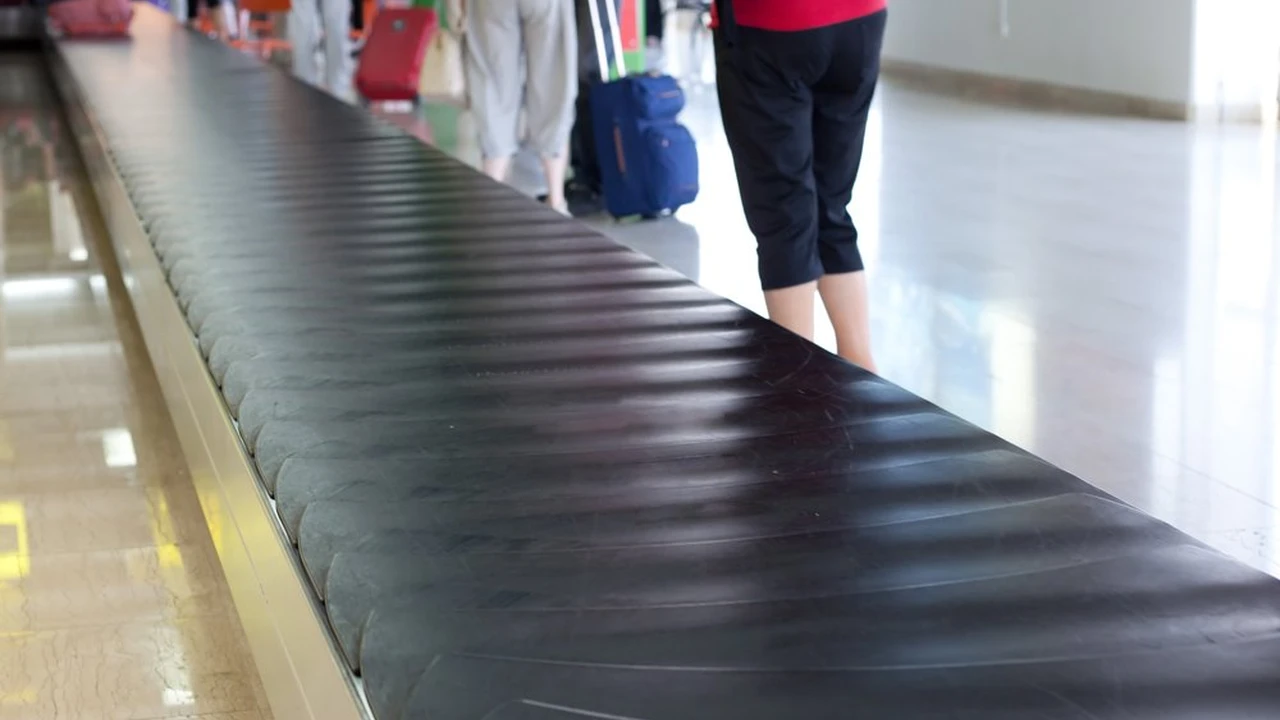Europe Travel: Dealing with Lost Luggage as a US Tourist
Sample meta description.

Understanding the Risks of Lost Luggage When Traveling in Europe
Hey there, fellow American traveler! Let's be real: losing your luggage is a nightmare scenario, especially when you're thousands of miles from home, soaking up the European vibes. While Europe is generally safe, and airport security is pretty tight, lost luggage happens more often than you'd think. Think about it – your bags are handled by multiple people, transferred between planes, trucks, and conveyor belts. There's ample opportunity for things to go wrong. Knowing the risks is the first step in minimizing your chances of a luggage meltdown.
Common causes include:
- Misrouting: Your bag gets tagged for the wrong destination. This is probably the most common culprit.
- Transfer Mishaps: Tight connections can lead to your luggage not making the transfer flight.
- Theft: Sadly, it happens. Opportunistic thieves operate in some airports.
- Damaged Tags: If your luggage tag gets ripped off or damaged, it becomes difficult to identify and route your bag correctly.
- Human Error: Let's face it, mistakes happen. Someone might simply put your bag on the wrong cart.
So, what can you do to protect yourself? We'll get into that in the next section.
Pre-Trip Preparations Minimize Your Luggage Loss Woes European Travel Tips
Okay, prevention is always better than cure, right? Here’s how to armor up your luggage before you even leave the States:
- Take Photos of Your Luggage and Contents: This is HUGE. Take clear photos of your suitcase (inside and out) before you leave. If your luggage does go missing, these photos are invaluable for filing a claim. They show the airline exactly what they're looking for and give them a better idea of the value of your belongings.
- Remove Old Luggage Tags: Seriously, get rid of them. Those old tags are confusing and can lead to your bag being sent to the wrong place. A clear, up-to-date tag is your bag's lifeline.
- Invest in Durable Luggage Tags: Those flimsy paper tags the airline gives you are prone to tearing. Buy some sturdy, waterproof luggage tags with your name, address (consider using a temporary address in Europe if you have one), email address, and phone number (include the international dialing code). Consider a luggage tag with a flap that hides your address from casual view to prevent theft.
- Use a Luggage Tracker: Technology is your friend! Luggage trackers, like Apple AirTags or Tile trackers, can be placed inside your suitcase. You can then track its location using your smartphone. This can be incredibly helpful in pinpointing where your bag is, even if the airline doesn't know. We'll talk more about specific trackers later.
- Make Copies of Important Documents: Passport, visa, driver's license – make copies of everything and keep them separate from the originals. Scan them and email them to yourself for easy access. If your bag containing these documents is lost, you'll have backups readily available.
- Inform Your Bank of Your Travel Plans: This isn't directly related to luggage, but it's crucial. Let your bank know you'll be traveling in Europe so they don't flag your credit card transactions as suspicious and freeze your account. A blocked credit card on vacation is a major headache.
What to Pack in Your Carry-On Essentials European Packing List
This is where you become a strategic packer. Think about what you absolutely cannot live without for a few days. If your checked bag goes missing, you'll be grateful you packed these items in your carry-on:
- Essential Medications: Never, ever check your medication. Keep it in your carry-on with a copy of your prescription.
- Toiletries: A travel-sized toothbrush, toothpaste, deodorant, and any other essential toiletries will keep you feeling fresh until you can buy more.
- A Change of Clothes: Pack at least one full outfit, including underwear and socks. Imagine arriving in Rome in July and having to wear the same clothes for three days!
- Electronics and Chargers: Phone, tablet, laptop, camera – and all the necessary chargers. Don't forget a universal adapter!
- Important Documents: Passport, visa, flight tickets, hotel reservations – keep these secure and easily accessible.
- Valuables: Jewelry, expensive electronics, and anything else of significant value should always be in your carry-on.
- Comfort Items: A travel pillow, eye mask, and earplugs can make a long flight more bearable, especially if you're stressed about your luggage.
Immediate Actions to Take When Your Luggage Goes Missing at a European Airport Lost Luggage Claim
Okay, this is the moment you've been dreading. You arrive at your destination, head to baggage claim, and… nothing. Your bag is nowhere to be found. Don't panic! Here's what to do:
- Report the Loss Immediately: Go to the airline's baggage service office in the baggage claim area. They will have a dedicated counter for lost luggage. Don't leave the airport without reporting the loss.
- File a Property Irregularity Report (PIR): This is the official form you need to fill out. Be as detailed as possible when describing your luggage: color, size, brand, any distinguishing features. Provide your contact information and your destination address. Get a copy of the PIR for your records. This is crucial for tracking your bag and filing a claim.
- Ask for a Baggage Tracking Number: The airline will give you a reference number that you can use to track the status of your luggage online. Check this number regularly for updates.
- Inquire About Reimbursement for Essential Items: Many airlines will provide a small allowance to cover the cost of essential items like toiletries and a change of clothes while you wait for your luggage. Ask about this policy and keep all receipts.
- Confirm Delivery Arrangements: Ask the airline how they will deliver your luggage to you once it's found. Will they deliver it to your hotel or apartment? Make sure they have the correct address and phone number.
- Keep All Documentation: Keep copies of your flight tickets, baggage claim tags, the PIR, and any receipts for expenses incurred due to the lost luggage. You'll need these for filing a claim.
Navigating the Claims Process for Lost Luggage in Europe Airline Compensation
Filing a claim can seem daunting, but it's a necessary step to recoup your losses. Here's a breakdown:
- Understand Your Rights: Under the Montreal Convention, airlines are liable for lost, delayed, or damaged baggage. The maximum liability is currently around 1,288 Special Drawing Rights (SDRs), which is equivalent to roughly $1,700 USD. However, this is a maximum, and you'll need to prove the value of your lost items.
- Gather Documentation: You'll need your flight tickets, baggage claim tags, the PIR, receipts for expenses, and a detailed list of the items in your lost luggage, along with their estimated value. This is where those photos you took before your trip come in handy!
- File Your Claim Within the Deadline: There are strict deadlines for filing claims. For delayed baggage, you usually have 21 days from the date you received your luggage to file a claim. For lost baggage, you typically have a longer period, but it's best to file as soon as possible. Check the airline's website for specific deadlines.
- Be Persistent: Airlines can be slow to process claims. Follow up regularly with the airline and keep a record of all communication. Don't be afraid to escalate your claim to a supervisor if you're not getting a response.
- Consider Travel Insurance: Travel insurance can provide additional coverage for lost or delayed baggage. Check your policy to see what it covers and what the claim process is.
Tech to the Rescue: Luggage Trackers for Peace of Mind Product Recommendations and Comparisons
As mentioned earlier, luggage trackers are a game-changer. Here's a closer look at some popular options:
- Apple AirTag: If you're an Apple user, the AirTag is a great choice. It uses Apple's Find My network, which has millions of devices worldwide, making it highly effective for tracking lost items. The AirTag is small, lightweight, and easy to use. It costs around $29. The downsides are that it only works with Apple devices and requires an iPhone or iPad to set up. It also has a limited range without relying on the Find My network.
- Tile Pro: The Tile Pro is a versatile tracker that works with both iOS and Android devices. It has a longer range than the AirTag and a louder alarm. It also offers a premium subscription service that includes features like smart alerts and item reimbursement. The Tile Pro costs around $35. The downside is that its network isn't as extensive as Apple's Find My network.
- Samsung SmartTag+: If you're a Samsung user, the SmartTag+ is a good option. It uses Samsung's SmartThings Find network and offers augmented reality (AR) finding, which can help you pinpoint the exact location of your bag. The SmartTag+ costs around $40. The downside is that it only works with Samsung devices and requires a Samsung Galaxy phone or tablet to set up.
- LandAirSea 54 GPS Tracker: For serious tracking, this GPS tracker gives real-time location data. It's more expensive (around $150) and requires a monthly subscription for data, but offers pinpoint accuracy globally. Ideal if you're *really* worried or have high-value items in your bag. It's overkill for most travelers, but a solid option for peace of mind.
Using Luggage Trackers: Place the tracker inside your suitcase in a secure pocket. Download the corresponding app and follow the instructions to pair the tracker with your smartphone. Test the tracker before your trip to make sure it's working properly. You can then track your bag's location in real-time using the app. Even if the airline loses your bag, you'll know where it is and can provide that information to the airline.
Packing Smart: Recommended Luggage and Accessories Product Recommendations and Comparisons
Investing in quality luggage and accessories can also help prevent luggage loss and damage. Here are some recommendations:
- Samsonite Freeform Carry-on Spinner: A durable and lightweight carry-on suitcase with smooth-rolling spinner wheels and a TSA-approved lock. Price: around $150. Usage: Ideal for short trips and for carrying essential items in case your checked bag is lost. Comparison: Compared to cheaper alternatives, the Samsonite Freeform offers better durability and maneuverability.
- Briggs & Riley Baseline Domestic Carry-On Expandable Spinner: A premium carry-on suitcase with a lifetime warranty and a compression system that allows you to pack more. Price: around $600. Usage: Ideal for frequent travelers who need a reliable and spacious carry-on. Comparison: Compared to the Samsonite, the Briggs & Riley is more expensive but offers superior quality and a lifetime warranty.
- eBags Packing Cubes: These mesh bags help you organize your luggage and compress your clothes, saving space and making it easier to find what you need. Price: around $30 for a set of six. Usage: Ideal for keeping your clothes organized and separate in your suitcase. Comparison: Compared to simply throwing your clothes in your suitcase, packing cubes help you stay organized and prevent wrinkles.
- TSA-Approved Luggage Locks: These locks allow TSA agents to open your luggage for inspection without damaging the lock. Price: around $15 for a set of two. Usage: Ideal for securing your luggage and preventing theft. Comparison: Compared to non-TSA-approved locks, these locks can be opened by TSA agents without being cut.
- Zero Grid Money Belt with RFID Blocking: Keep your valuables safe and secure with this discreet money belt that protects against RFID skimming. Price: around $25. Usage: Ideal for storing your passport, credit cards, and cash while traveling. Comparison: Compared to carrying your valuables in your pockets or purse, a money belt is more secure and less likely to be stolen.
Communicating Effectively with Airlines When Dealing with Lost Luggage Language Barrier Tips
Navigating communication with airlines in Europe can be tricky, especially if you don't speak the local language. Here are some tips:
- Learn Basic Phrases: Learn a few basic phrases in the local language, such as "I lost my luggage," "Where is the baggage service office?" and "Can you help me?"
- Use Translation Apps: Download a translation app like Google Translate or iTranslate on your smartphone. These apps can translate spoken or written language in real-time.
- Write Down Your Information: Write down your name, flight number, baggage claim tag number, and destination address in both English and the local language. This will make it easier to communicate with airline staff.
- Be Polite and Patient: Even if you're frustrated, remain polite and patient. Airline staff are more likely to help you if you're courteous.
- Ask for a Translator: If you're having difficulty communicating, ask if there's someone who speaks English or your native language.
- Document Everything: Keep a record of all communication with the airline, including the date, time, and the name of the person you spoke with.
Staying Calm and Positive During a Luggage Crisis Mindset and Coping Strategies
Losing your luggage is stressful, but it's important to stay calm and positive. Here are some coping strategies:
- Take a Deep Breath: Take a few deep breaths to calm your nerves. Remember that losing your luggage is not the end of the world.
- Focus on What You Can Control: You can't control the fact that your luggage is lost, but you can control how you react to the situation. Focus on taking the necessary steps to report the loss and file a claim.
- Remember Your Travel Insurance: If you have travel insurance, remember that it can help cover the cost of lost or delayed baggage.
- Treat Yourself: Buy yourself a small treat, like a coffee or a pastry, to lift your spirits.
- Focus on the Positive Aspects of Your Trip: Don't let the lost luggage ruin your entire vacation. Focus on the positive aspects of your trip, like the sights you're seeing and the experiences you're having.
- Ask for Help: Don't be afraid to ask for help from friends, family, or hotel staff. They can offer support and assistance.
:max_bytes(150000):strip_icc()/277019-baked-pork-chops-with-cream-of-mushroom-soup-DDMFS-beauty-4x3-BG-7505-5762b731cf30447d9cbbbbbf387beafa.jpg)






